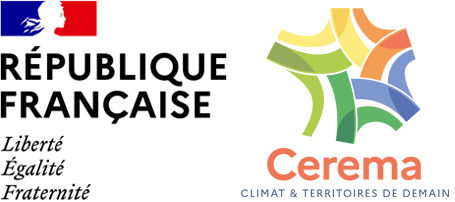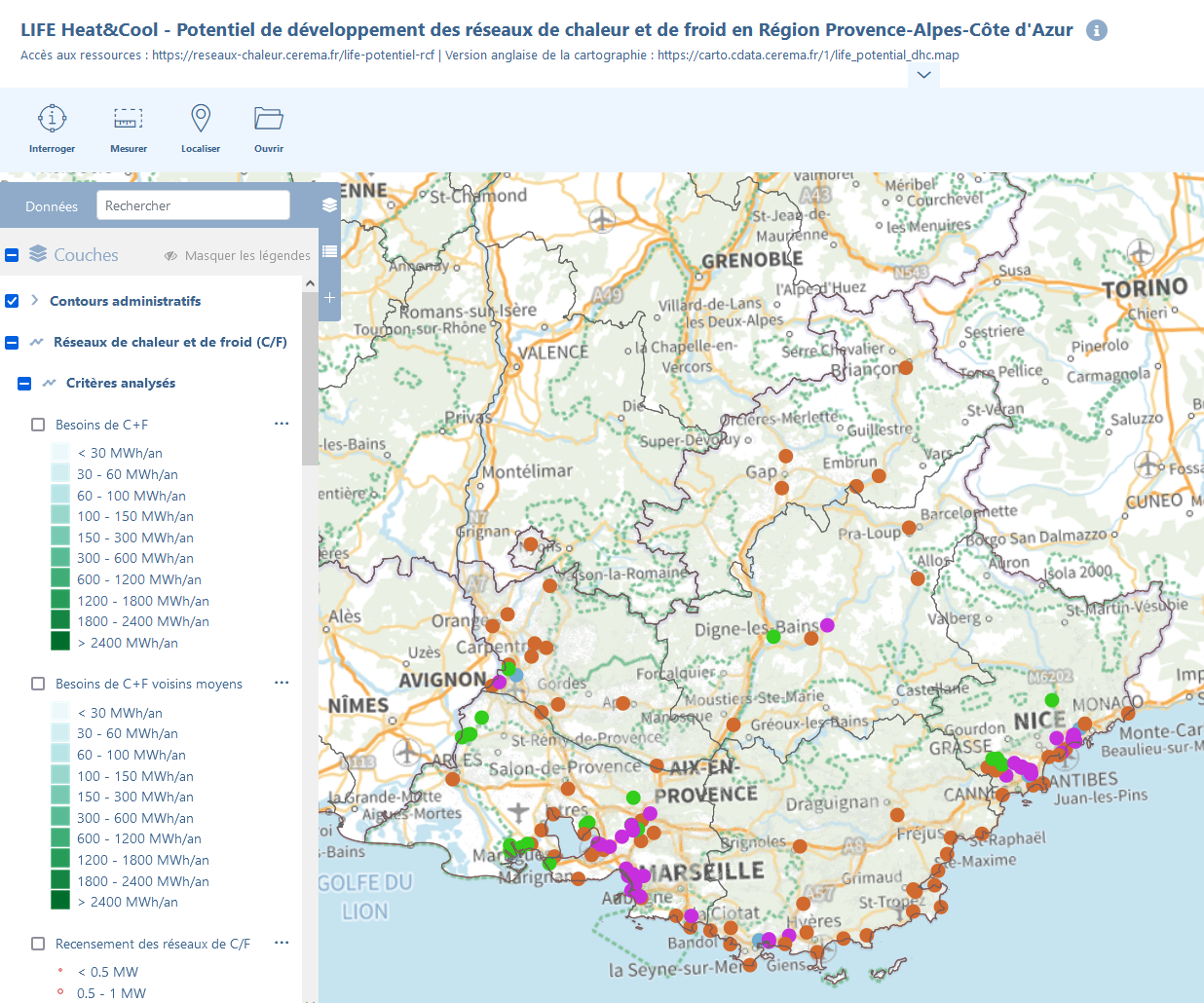"DHC Potential" : a map to identify the District Heating and Cooling potential of development
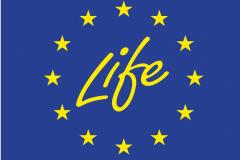

The Life project "Heat&Cool" in the Provence-Alpes-Côte d'Azur region
Starting in October 2021 and led by the South Region, the European Life Heat&Cool project aims to massify the development of district heating and cooling (DHC) networks in the Provence-Alpes-Côte d'Azur region. It brings together many partners, including : AMORCE, CEREMA, EnvirobatBDM, FNCCR, Métropole Nice Côte d'Azur, City of Port-de-Bouc, City of Paullo (Italy).
The first action of the project is to identify the DHC potential of development in the region. Based on the knowledge of the territory, several criteria have been constructed and prioritized to feed the analysis and lead to the identification of the potential.
General principle of construction of the "DHC Potential" tool
From the knowledge data of the territory, a multi-criteria analysis is constituted by a double scoring system :
1. Each criterion studied is quantified in a homogeneous way and independently from each other by a score between 0 and 100 (maximum relevance) for each 100 x 100m grid cell, on the whole regional territory.
2. The criteria are then ranked in relation to each other in terms of their importance in promoting the development of heating and/or cooling networks.

Schematic principle of the method of constitution of the DHC Potential tool
With the "DHC potential" tool, locate in one click the development potential of heating and cooling networks in your territory!
The tool provides the user with a visualization of the DHC potential of development and a ranking of the most suitable sectors in the Provence-Alpes-Côte d'Azur region. It also shows the resources and the consumptions at a scale of 100 meters.
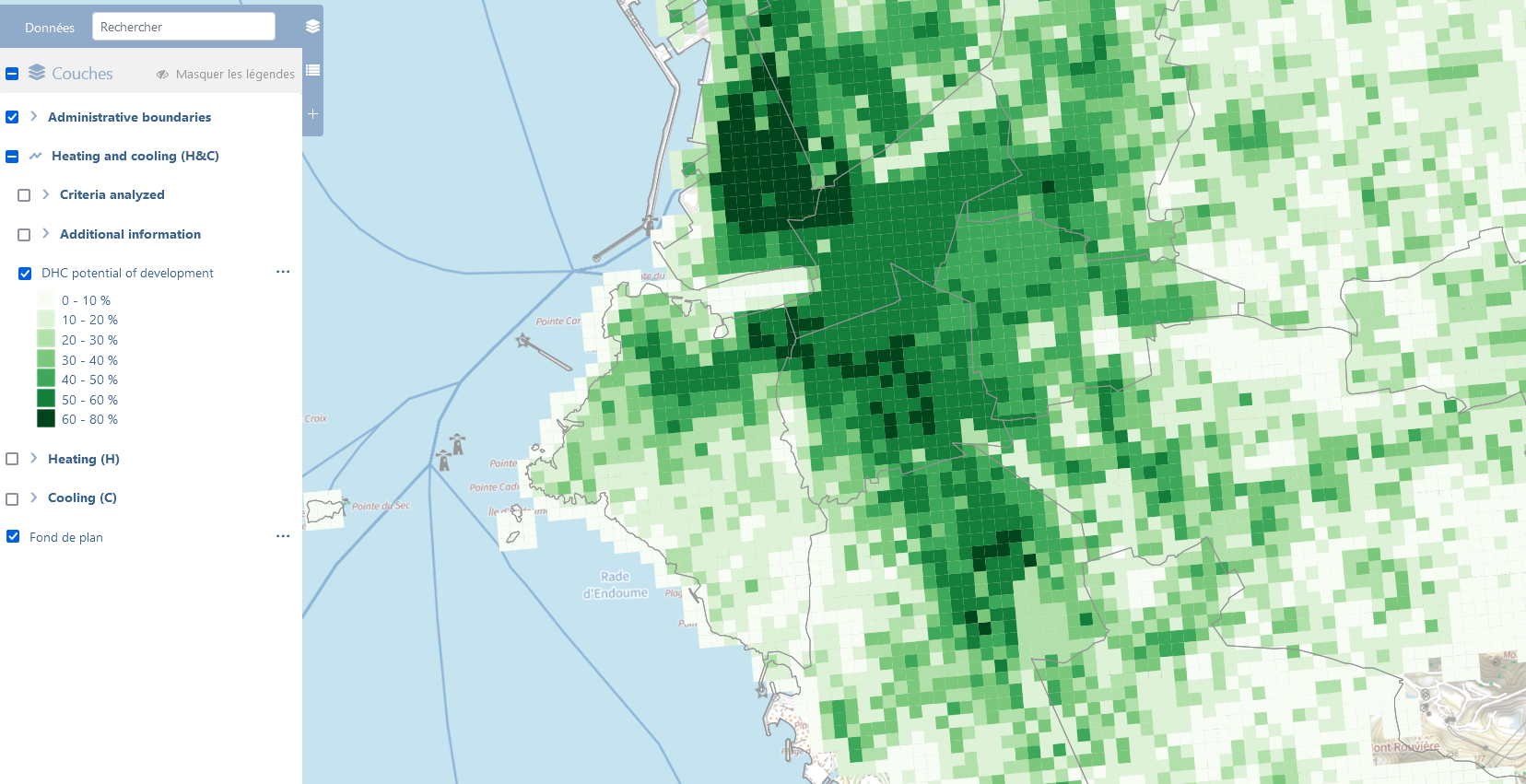
Representation of the heating and cooling networks potential of development for the city of Marseille
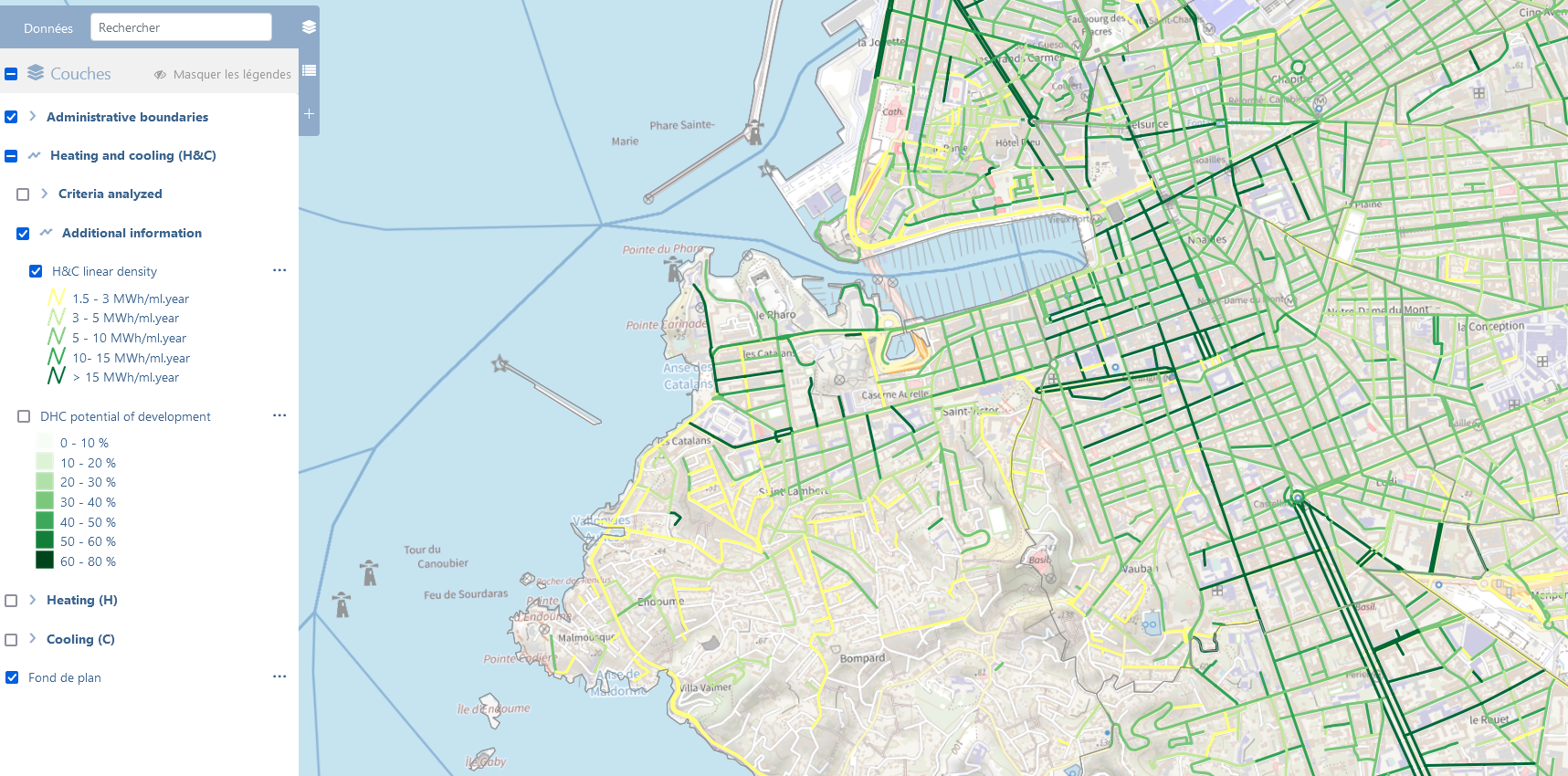
Representation of the thermal density (heat and cool) for the city of Marseille
Resources and consolidation perspectives
The tool uses many recognized national databases and reference systems (Land Files, INSEE, BDTOPO @IGN, SDES, ADEME,...). Some of the resources identified have not yet been integrated to identify areas favorable to the development of DHC due to a lack of data consolidation (RNIC, RPLS). This is the case for the heating mode of buildings, the precise geolocation of large residential consumers or the availability of land for network equipment.
Depending on the evolution of the available data, the method could be completed at a later date.
Moreover, a deployment for other regional territories is possible with the updating of some data (waste heat deposits, geothermal potential or linear of existing networks, ...). A continuous logic of improvement of the tool is concomitant with an at least annual update of the databases used.
Limitations and precautions
The heat and cooling requirements are estimates based on assumptions, detailed in the LIFE Heat&Cool methodological report. They are not real consumption or production data and cannot be used for project feasibility studies. Indeed, the purpose of the tool is to feed the technical opportunity phase of a project.
As soon as an opportunity is identified on the territory, a feasibility study is essential to refine the heating and cooling network project. This study will be based on actual building consumption data and will address the legal, economic and environmental aspects of the CH network project.
Targets, purpose and use
The DHC Potential tool is intended to replace or facilitate the carrying out of opportunity studies by a local authority or its service provider. It can also be useful when developing energy or land-use planning strategies from the regional to the local level (SRADDET, PCAET, energy master plans, DHC master plans, etc.),
Available in open data and downloadable, the user can import the data into a local geomatic tool and deepen the analysis of the DHC Potential tool by crossing with specific data of its territory, for example, actual
consumption, local renewable energy resources, knowledge of the building stock, urban and renovation projects, establishments sensitive and vulnerable to the urban heat island, etc.
Finally, citizens' groups promoting the development of renewable energies can identify the municipalities and sectors for which a heating network project is relevant (following the example of solar cadastres for photovoltaics) and which could possibly be the subject of participatory financing.
Access the tool and related resources
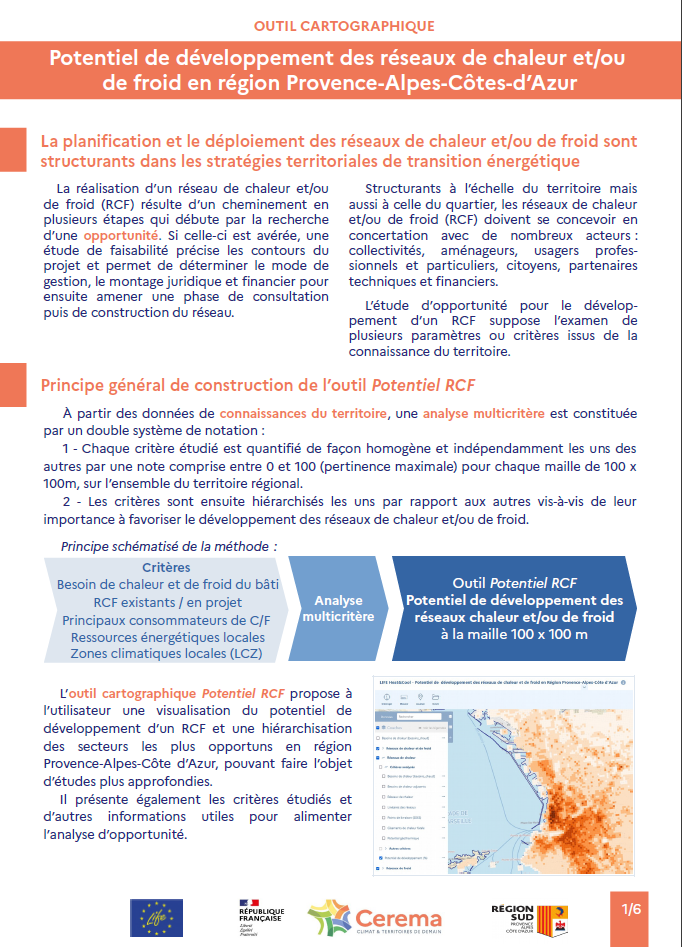
To access the tool's user guide, click here (coming soon)
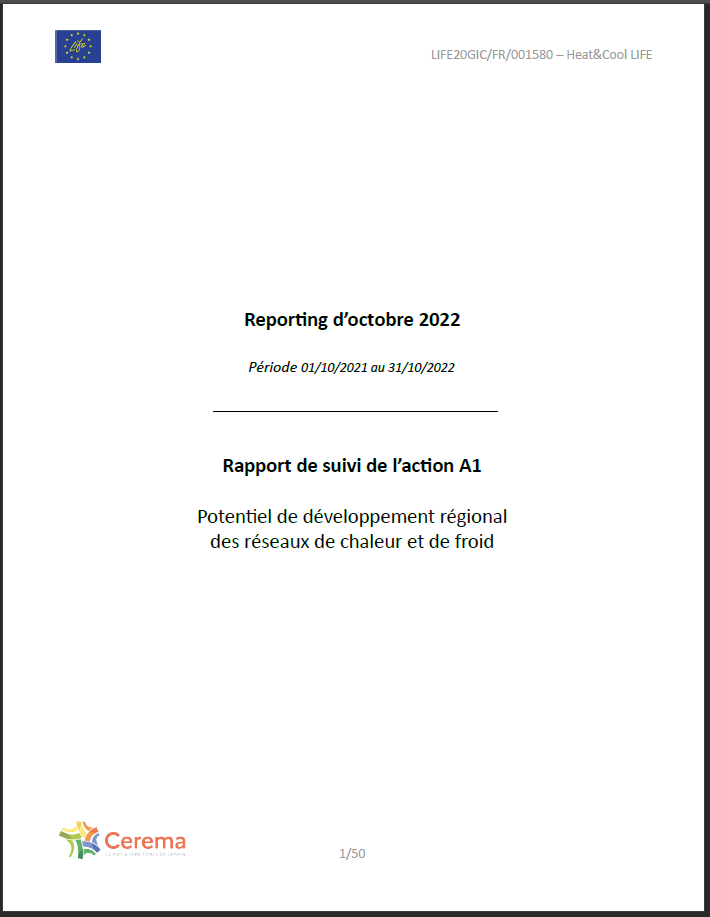
To access the report and its annexes (coming soon)
